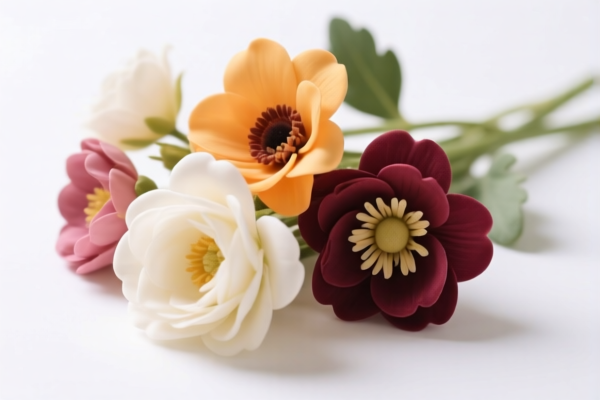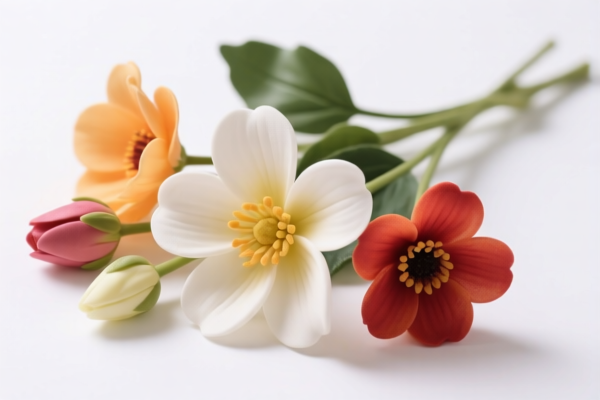| HS Code | Official Doc | Tariff Rate | Origin | Destination | Effective Date |
|---|---|---|---|---|---|
| 6702102000 | Doc | 38.4% | CN | US | 2025-05-12 |
| 6702104000 | Doc | 33.4% | CN | US | 2025-05-12 |
| 3926400010 | Doc | 35.3% | CN | US | 2025-05-12 |
| 3919905060 | Doc | 60.8% | CN | US | 2025-05-12 |
| 3919901000 | Doc | 61.5% | CN | US | 2025-05-12 |




Artificial Flower Arrangement
An artificial flower arrangement is a decorative display created using synthetic flowers and foliage, instead of natural ones. These arrangements serve aesthetic purposes and are utilized in a wide range of settings.
Materials:
- Flowers: Commonly made from silk, polyester, plastic, foam, paper, wood, or a combination of these. Silk and polyester offer a realistic look and feel, while plastic is more durable and affordable. Foam flowers are lightweight and easily shaped.
- Foliage: Synthetic leaves, grasses, and branches mirroring natural plant life. Materials are similar to those used for flowers.
- Containers: Vases, pots, baskets, boxes, or other vessels. Materials vary widely – glass, ceramic, metal, wood, woven materials are all common.
- Accessories: Ribbons, beads, stones, water gels (for a more realistic appearance), and other decorative elements.
- Stem Material: Wire, plastic, or wood used to support the flower heads and allow for shaping.
Purpose:
- Decoration: Primarily used for enhancing the visual appeal of homes, offices, event venues, and other spaces.
- Long-Lasting Beauty: Offer a permanent or extended-life alternative to fresh flowers, eliminating the need for watering, pruning, or replacing wilted blooms.
- Allergy-Friendly: Provide a floral display for individuals with allergies to pollen.
- Event Decoration: Widely used in weddings, funerals, parties, and corporate events.
Function:
- Visual Focal Point: Arrangements draw the eye and create a specific aesthetic mood.
- Space Enhancement: Can fill empty spaces, add color, and complement existing décor.
- Thematic Representation: Arrangements can be designed to reflect specific themes, seasons, or occasions.
Usage Scenarios:
- Home Décor: Centerpieces, mantelpiece displays, shelf accents, bedroom adornments.
- Office/Commercial Spaces: Reception areas, conference rooms, retail displays.
- Events: Wedding bouquets and centerpieces, funeral tributes, party decorations, stage props.
- Permanent Installations: Large-scale displays in hotels, restaurants, and public spaces.
- Gifts: A lasting and maintenance-free gift option.
Common Types:
- Bouquets: Hand-tied arrangements, often presented as gifts or used as centerpieces.
- Centerpieces: Designed for tables, typically featuring a balanced and visually appealing composition.
- Floral Wreaths: Circular arrangements used for decoration or as tributes.
- Wall Arrangements: Mounted displays creating a floral accent on walls.
- Cascade Arrangements: Featuring flowers that spill downwards, often used for events or larger displays.
- Silk Flower Arrangements: Utilizing silk flowers for a high-end, realistic look.
- Dried Flower Arrangements: Combining artificial and preserved dried flowers for a unique texture and aesthetic.
- Minimalist Arrangements: Simple displays with a few carefully selected blooms.
- Seasonal Arrangements: Designed to reflect the colors and themes of specific seasons (e.g., spring, autumn, winter).
Artificial flower arrangements are decorative items composed of flowers, foliage, and fruit imitations, often assembled using various binding methods. These arrangements are commonly used for home decoration, gifting, or event styling.
The following HS codes may be relevant based on the provided information:
-
6702102000: This code covers artificial flowers, foliage, and fruit made of plastics, specifically those assembled by binding with flexible materials such as wire, paper, textile materials, or foil, or by gluing or similar methods. This is applicable if the arrangement is constructed using these techniques and is primarily made of plastic.
- 67: Chapter 67 pertains to Prepared animal, vegetable, fruit, and nut food; residues, wastes of the food-processing industry; prepared beverages, spirits and vinegar; yeast, preparations containing yeast. However, this HS code specifically focuses on artificial versions of these items.
- 02: Heading 02 within Chapter 67 designates artificial flowers, foliage, and fruit.
- 102000: This further specifies plastics as the material and the assembly method (binding, gluing, etc.).
-
6702104000: This code also covers artificial flowers, foliage, and fruit made of plastics, but applies to "Other" types, including parts. This is suitable if the arrangement doesn't fit the specific binding/gluing description of 6702102000 or if it includes loose parts.
- 67: Chapter 67 – Prepared animal, vegetable, fruit, and nut food; residues, wastes of the food-processing industry; prepared beverages, spirits and vinegar; yeast, preparations containing yeast.
- 02: Heading 02 – Artificial flowers, foliage, and fruit.
- 104000: This indicates "Other" plastics types and includes parts of artificial flowers, foliage, or fruit.
-
3926400010: This code covers statuettes and other ornamental articles, including bows and similar products for decorative purposes, specifically for gift-packaging and the like. This may be applicable if the arrangement is designed as a decorative statuette or includes significant ornamental elements beyond just the flower arrangement itself.
- 39: Chapter 39 pertains to Plastics and articles thereof.
- 26: Heading 26 covers plastics articles not elsewhere specified.
- 400010: This specifically designates statuettes and ornamental articles, including decorative bows and gift packaging items.
Regarding HS code 6702102000 and 6702104000, it is important to determine the material composition (specifically if it is plastic) and the assembly method used. If the arrangement is made of plastic and assembled by binding or gluing, 6702102000 is more appropriate. If it's plastic but assembled differently or includes parts, 6702104000 would be the correct choice.
Customer Reviews
No reviews yet.